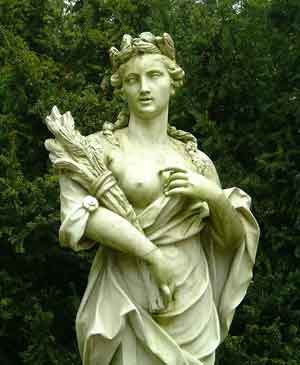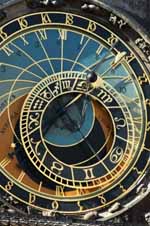
Thanks to Astrococktail for the link to this article. Last year Ceres was reclassified as a planet along with Pluto and the new planet Eris as a “dwarf planet,” and most recently as a “Plutoid.”
Ceres has an interesting history: when it was first discovered scientists hailed Ceres as a new planet, but then after Neptune was discovered and it was much larger, Ceres was demoted to asteroid status. Now scientists report that Ceres has been a relative of Pluto all along, an “escapee of the Kuiper belt” that entered our solar system long ago, rather than an asteroid as it has been classified all these years.
There are thousands of asteroids, and some astrologers work with virtually all of them. There is an eerie synchronicity between asteroid names and significant events (check out this article for some eerie coincidences!!), but astrologers who work with asteroids use primarily the major ones: Juno, Vesta, Pallas, and til now, Ceres. Even these asteroids have secondary importance and are felt to have more of an influence on behavior patterns than real personality dynamics.
With the reclassification of Ceres her role in astrology has become more pronounced. Ceres was known in Greece as as Demeter, and was the mother of Persephone/Kore who was taken by Hades/Pluto into the Underworld. Ceres/Demeter, goddess of grain and nourishment who was well-loved by the people on earth, abandoned them in her grief over the loss of her daughter causing starvation and devastation. The return of Persephone/Kore brought the return of Spring, but the archetype of Ceres contains the duality of the nurturing eath with the devastation of nature’s wrath. For more information on Ceres, visit my earlier articles here, and more here.

